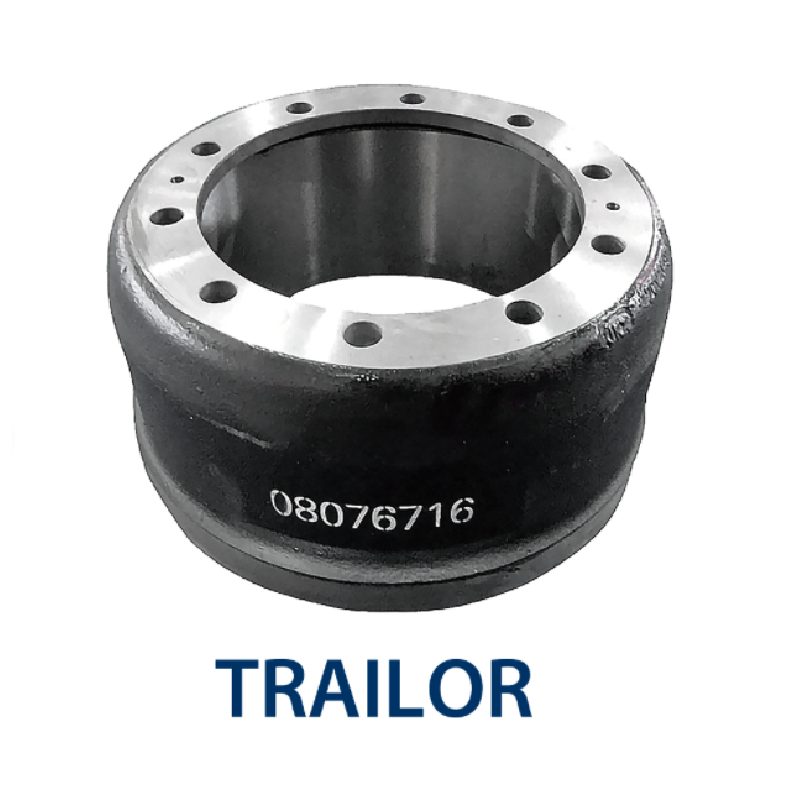Nov . 04, 2024 16:27 Back to list
When to Replace Brake Drums for Optimal Vehicle Performance and Safety
When to Change Brake Drums A Comprehensive Guide
Brake drums are a critical component of your vehicle's braking system, often overlooked until they show signs of wear or malfunction. Understanding when to change your brake drums is essential for maintaining vehicle safety and performance. In this article, we will explore the signs of wear, the importance of timely replacement, and the replacement process itself.
Understanding Brake Drums
Brake drums are part of a drum brake system, which is commonly found in older vehicles and some rear brakes of newer models. When the brake pedal is pressed, brake shoes inside the drum expand against its inner surface, creating friction that slows down the wheel. Over time, heat and friction can cause the brake drum to wear down, leading to reduced braking efficiency and safety concerns.
Signs Your Brake Drums Need Replacement
1. Unusual Noises One of the first signs of brake drum wear is unusual noise during braking. If you hear a grinding or squeaking sound, it may indicate that your brake shoes are worn down, and the drum is being subjected to metal scraping against metal. This can lead to severe damage if not addressed promptly.
2. Vibration or Pulsation If you feel a vibration or pulsation in the brake pedal when applying the brakes, this could indicate a warped brake drum. A warped drum can cause uneven contact with the brake shoes, compromising braking effectiveness.
3. Increased Stopping Distance A noticeable increase in stopping distance is a significant indicator that your brake drums may be failing. If you find yourself pushing harder on the pedal with little response, it’s crucial to have them inspected.
4. Brake Fluid Leaks Although less common with drum brakes than disc brakes, leaks can occur and may indicate a problem in the braking system. This can lead to air entering the system, resulting in poor braking performance.
5. Visual Inspection Regular visual inspections can also help in identifying the need for brake drum replacement. Look for cracks, scoring, or discoloration on the surface of the drum. If the surface appears to be uneven or has extensive wear, it’s time for a change.
Importance of Timely Replacement
Replacing worn out brake drums in a timely manner is crucial for several reasons
- Safety Worn brake drums can significantly impair braking performance, increasing the risk of accidents. Ensuring that your brakes are in good condition is vital for your safety and that of others on the road.
when to change brake drums

- Cost-Effectiveness Delaying the replacement of brake drums can lead to further damage to other components of the braking system, such as brake shoes and wheel cylinders. Addressing the issue early can save you money in the long run.
- Vehicle Performance Good braking performance contributes to overall vehicle reliability. Replacing worn drums ensures that your vehicle performs optimally and maintains its value.
The Replacement Process
If you determine that your brake drums need to be replaced, the following steps outline the general process
1. Raise the Vehicle Using a jack, carefully lift the vehicle and secure it on jack stands to prevent accidents.
2. Remove the Wheels Detach the lug nuts and remove the wheels to access the brake components.
3. Inspect and Remove Old Drums Examine the brake assembly and remove the old brake drums. You may need to detach the brake shoes first, along with any springs or clips holding them in place.
4. Install New Drums Place the new brake drums onto the hub, ensuring they fit securely. Reattach the brake shoes and any necessary hardware.
5. Reassemble Put the wheels back on, tighten the lug nuts, and lower the vehicle back to the ground.
6. Test Drive After replacing the brake drums, it’s essential to take the vehicle for a test drive. Pay attention to any unusual noises or vibrations and ensure that the brakes function smoothly.
Conclusion
Understanding when to change brake drums is vital for every vehicle owner. Regular inspection and awareness of signs of wear can prevent unsafe driving conditions and costly repairs. By staying informed and acting promptly when issues arise, you can ensure your vehicle remains safe and reliable on the road. Always consult with a professional mechanic if you are unsure about the condition of your brake drums or the appropriate maintenance procedures. Safe driving starts with well-maintained brakes!
-
Volvo Brake Drum: OEM Quality, Optimal Safety
NewsAug.27,2025
-
Durable Brake Drum MAZ for Heavy Duty Trucks | High Performance
NewsAug.26,2025
-
FUWA: Premium Quality, Reliable Performance & Innovative Solutions
NewsAug.25,2025
-
Liza Brake Drum: Superior Quality & Performance for Safe Driving
NewsAug.24,2025
-
Iveco Brake Drum | Premium OE Quality for Daily & Eurocargo
NewsAug.22,2025
-
Your Brake Drum Man: Quality & Performance Parts
NewsAug.21,2025
